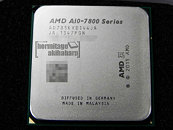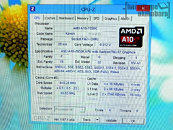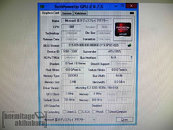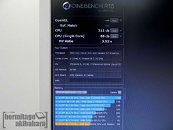Sunday, December 29th 2013

AMD A10 "Kaveri" APU Pictured, Battlefield 4 Bundles Planned
What better way to market the graphics processing prowess of your processor than bundling one of the most GPU-intensive games of the season with it? AMD is reportedly planning "Battlefield 4 Edition" packages of its A10 "Kaveri" APUs, which at slightly higher premiums than normal PIB packages, would give you Origin keys to Battlefield 4, much like a similar scheme with AMD's Radeon R9 290 series.
Such Battlefield 4 SKUs could involve at least two APU models, the A10-7850K, and A10-7700K. The two may meet the minimum system requirements of the game at resolutions of up to HD+ (1600 x 900 pixels). Speaking of A10-7850K, Japanese publication "Hermitage Akihabara" snapped a handful pictures and screenshots of the the chip. The first one below reveals the APU package, the following reveal the CPU-Z and GPU-Z screenshots, trailed by a quick run of Cinebench R15. AMD is expected to launch its "Kaveri" line of socket FM2+ APUs on January 13-14 globally.
Source:
Hermitage Akihabara
Such Battlefield 4 SKUs could involve at least two APU models, the A10-7850K, and A10-7700K. The two may meet the minimum system requirements of the game at resolutions of up to HD+ (1600 x 900 pixels). Speaking of A10-7850K, Japanese publication "Hermitage Akihabara" snapped a handful pictures and screenshots of the the chip. The first one below reveals the APU package, the following reveal the CPU-Z and GPU-Z screenshots, trailed by a quick run of Cinebench R15. AMD is expected to launch its "Kaveri" line of socket FM2+ APUs on January 13-14 globally.




45 Comments on AMD A10 "Kaveri" APU Pictured, Battlefield 4 Bundles Planned
It's fake.
Modern iGPUs =/= Graphics Only
Okay, let's take this another way, just to prove how clueless you people are, I'm gonna ask you guys what does APU stand for and why does it stand for that.
To be fair, APUs, at least in AMD's true "vision", don't really exist yet, Kaveri should change that. But AMD is doing a pretty good job at explaining what they are (that CGI video was awesome), but not as good a job in showing it, yet.
The images are fake, as stated before, the multiplier is weird (measures of 0,5? Really? What is is this, Athlon 64?), the trademark/copyright sign is not where it's supposed to be, scores makes zero sense (A10 6800K/DDR3-2133 gets 328 points) and a lot of other shady stuff that I won't bother going into.He never said Richland is faster in IPC than Ivy Bridge... he said Richland lost to a smaller margin in IPC (to whatever) than those images make out Kaveri to. Read again.
Is that right?
im pretty split between this and a AM3+ CPU
I was Crunching WCG at 100% cores and 100% CPU. 9W...9!
I have 8 Watts to play with that Crunching at 100% hasn't even touched!!
Now, I see that r15 where my little i5 beats the bestest A10? Wild.
I have a couple AMD desktops, in storage. One is an old Socket A, another is a dual core 64, don't remember. I also have a P4 intel, 2.8 GHz that crunches well. The Dual core puts up decent numbers but, is a wattage whore. The Socket A? That's my toy. It crunches a bit but mostly just a fun thing to OC and check Facebook on. :p
Sorry, kinda wandered off topic. Sorry, I seem to do that sometimes...:rolleyes:
Anyway, how do you know how Kaveri performs? LOL
If by any chance any of you are doing the math in relation to this "article", I gotta ask you to do a reality check and notice it's fake and to urge you to stop wasting your time.
Also, Cinebench is a pretty piss-poor measurement of performance between Intel and AMD (to begin with), as are all other ICC compiled software.
His claim was that Kaveri is worse than Richland.
My points:
Richland isn't even half as fast as IvyBridge.
Kaveri is now half as fast as Haswell.
How do you get that I believe what the same thing he does from that?
Also, this is only 1 benchmark, which is too small a test set to give reliable information about performance
On a more serious note don't forget turbo, as those ivy cores when one core is running end up running well over 2.6-2.7ghz which is what they probably were running the test at, and the fact that a haswell clocked at 4.4ghz is not more than twice as fast as the ivy 1.7ghz is proof of that
Anyway, good point, low power Intel CPUs do turbo very high on one core especially.
But it's irrelevant, since the screeshots are 99% fake.LMAO, all three of us are saying pretty much the same thing, just that he started by saying the scores in the images can't be right, and they aren't, since they are made up.
Can we STFU about this now?
but then again that multicore score is almost exactly what Richland scores if not less if I remember correctly, I can check reviews but I'm too lazy right now lol. And I'm using my cellphone to write this